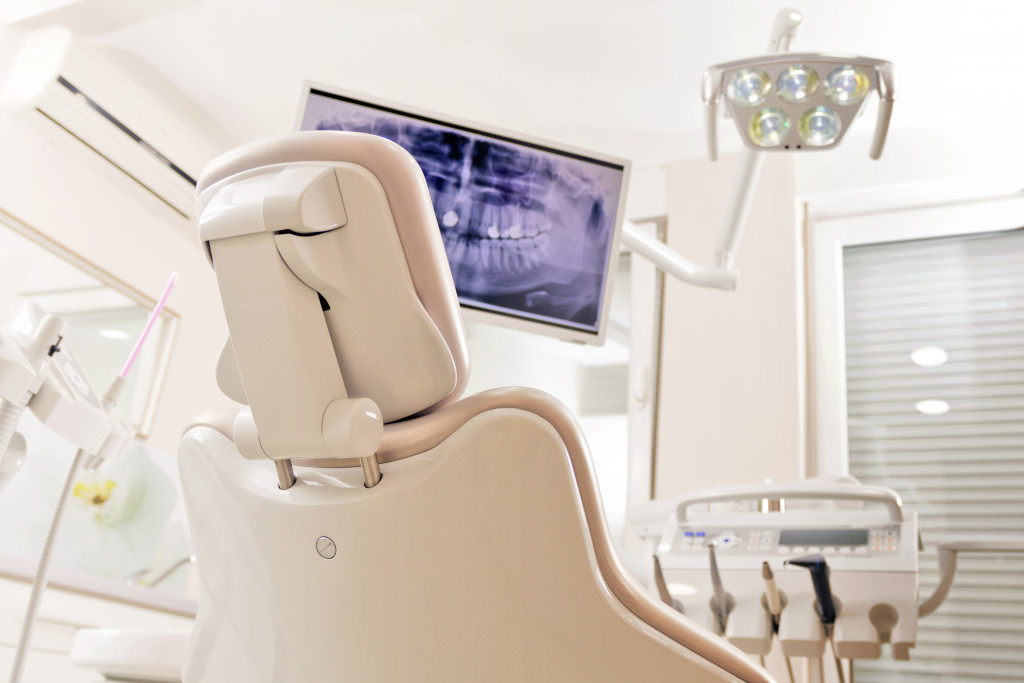There is no question that technology has had a profound impact on dentistry. In fact, it could be argued that dental technology has never been more advanced than it is today. This has led to enhancements in oral health for patients of all ages.
Technology has played a huge role in enhancing dentistry. From lasers to dental implants, technology has helped make dental procedures more accurate, efficient, and comfortable for patients. Therefore, more dentists are investing in technology to stay ahead of the curve and offer their patients the best possible care.
Technology in Dentistry

It’s no secret that many people are afraid of the dentist. In fact, one study found that almost half of Americans avoid going to the dentist because they’re afraid. This fear often leads to patients neglecting their oral health, which can have serious consequences.
Technology has made dentistry more comfortable and less intimidating for patients. For example, dental lasers allow dentists to treat cavities without drills, and new dental materials make fillings less visible. In addition, advances in digital imaging make it easier for dentists to diagnose and treat problems early.
Below are more examples of how technology has improved dentistry over the years:
-
Lasers
These days, dentists use technology to enhance specific procedures. One of the most exciting developments in dentistry is the use of lasers. Lasers are very precise and can be used to remove tooth decay, seal teeth, and even cut gums. They are also effective at killing bacteria.
Plus, dentists can now use lasers to remove tooth decay and whiten teeth without harsh chemicals or uncomfortable dental drills. As a result, treatments are faster, more comfortable, and less invasive.
Lasers can be used on their own or in conjunction with other dental tools. For example, lasers can be used to remove decay, and then a dental drill can be used to clean up the area.
Dentists are also using lasers to treat gum disease. By targeting the bacteria that cause gum disease, dentists can reduce inflammation and stop the progression of the disease.
-
Invisible fillings
Another example of dental technology at work is invisible fillings. Made from porcelain or composite resin, these tooth-colored fillings blend in with the natural teeth so that they are virtually invisible. They also last longer than traditional silver amalgam fillings. As a result, patients can have beautiful, healthy teeth that look natural.
-
Digital X-rays
Radiography (taking x-rays) is an integral part of dentistry. It enables dentists to see inside the mouth and detect problems such as cavities, abscesses, and tumors. Traditionally, this has been done using film x-rays. However, digital x-rays have now replaced film x-rays in most dental practices.
Digital x-rays produce high-quality images that can be enlarged and manipulated on a computer screen. This makes it easier for the dentist to see what is going on inside the mouth and to make a diagnosis. It also means that the patient’s x-rays can be stored on a computer and shared with other dentists if necessary.
Digital x-rays are also much safer than film x-rays. They produce up to 90% less radiation, which means they are much less likely to cause cancer.
-
Intraoral Camera
An intraoral camera is a small camera that is attached to a dental mirror. It allows the dentist to see inside the mouth in great detail. This is especially useful for diagnosing problems such as tooth decay and gum disease.
The intraoral camera can also be used to show patients what is happening inside their mouths. This can help them understand why they need treatment and how it will be done. Plus, it can be a great way to show patients the results of treatments done.
-
Computer-aided design and manufacturing
Computer-aided design and manufacturing (CAD/CAM) is a technology that helps to create dental prostheses. This technology allows dentists to create custom-made crowns, bridges, and other dental prostheses in a laboratory.
This means that patients can get their dental prostheses quickly and without having to visit a laboratory. As a result, they can get their dental work done quickly and without having to go through a lot of pain.
Promoting Better Oral Health Outcomes Through Technology
These days, there are a lot of ways that technology can be used to improve oral health outcomes. For example, there are now dental lasers that can be used to remove tooth decay and promote better healing. This innovation can help to reduce the pain and swelling that is often associated with dental procedures.
Dentists can also use technology to take digital impressions of patients’ teeth. This means that they can get a more accurate diagnosis and treatment plan for their patients. It also helps to ensure that there are no mistakes made when creating dental prostheses.
As a result of all these, dental patients today are getting better care than ever before. This is thanks to the advances in technology that have been made in the dental field. So, if you’re looking for a dentist who can provide you with high-quality care, be sure to ask about their use of technology.


